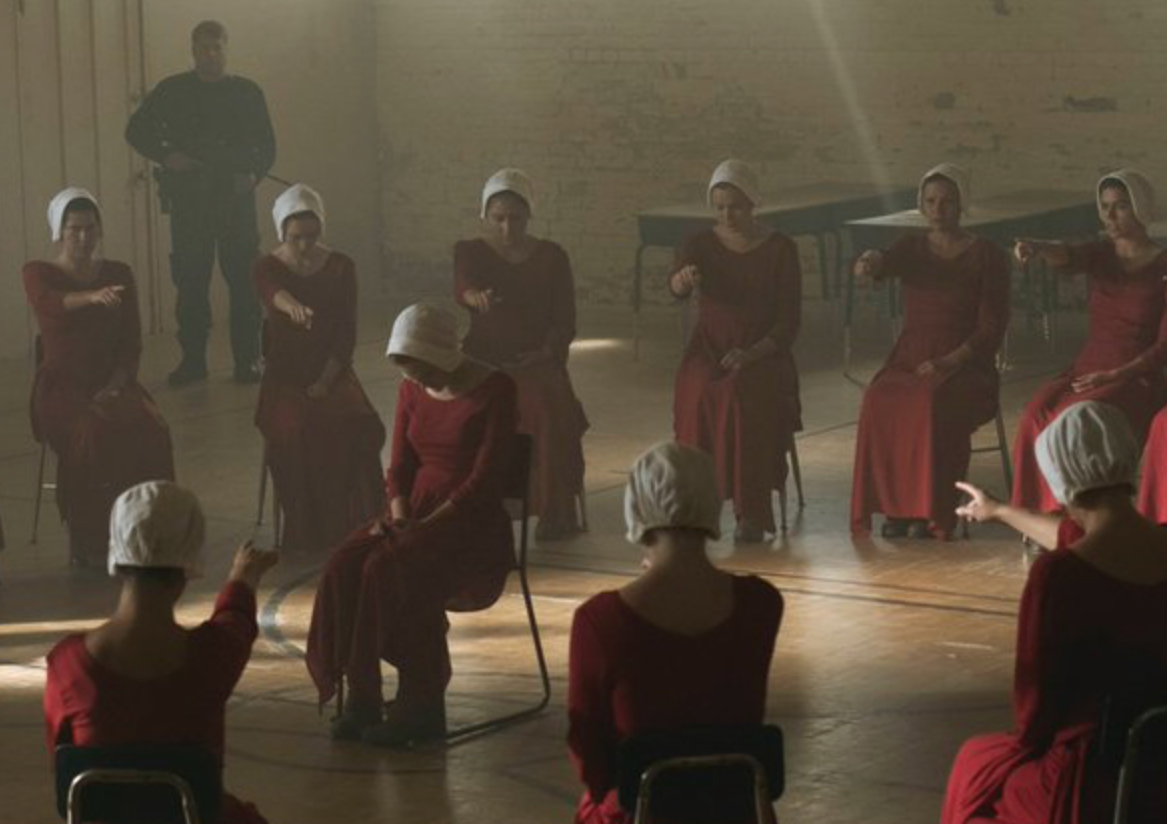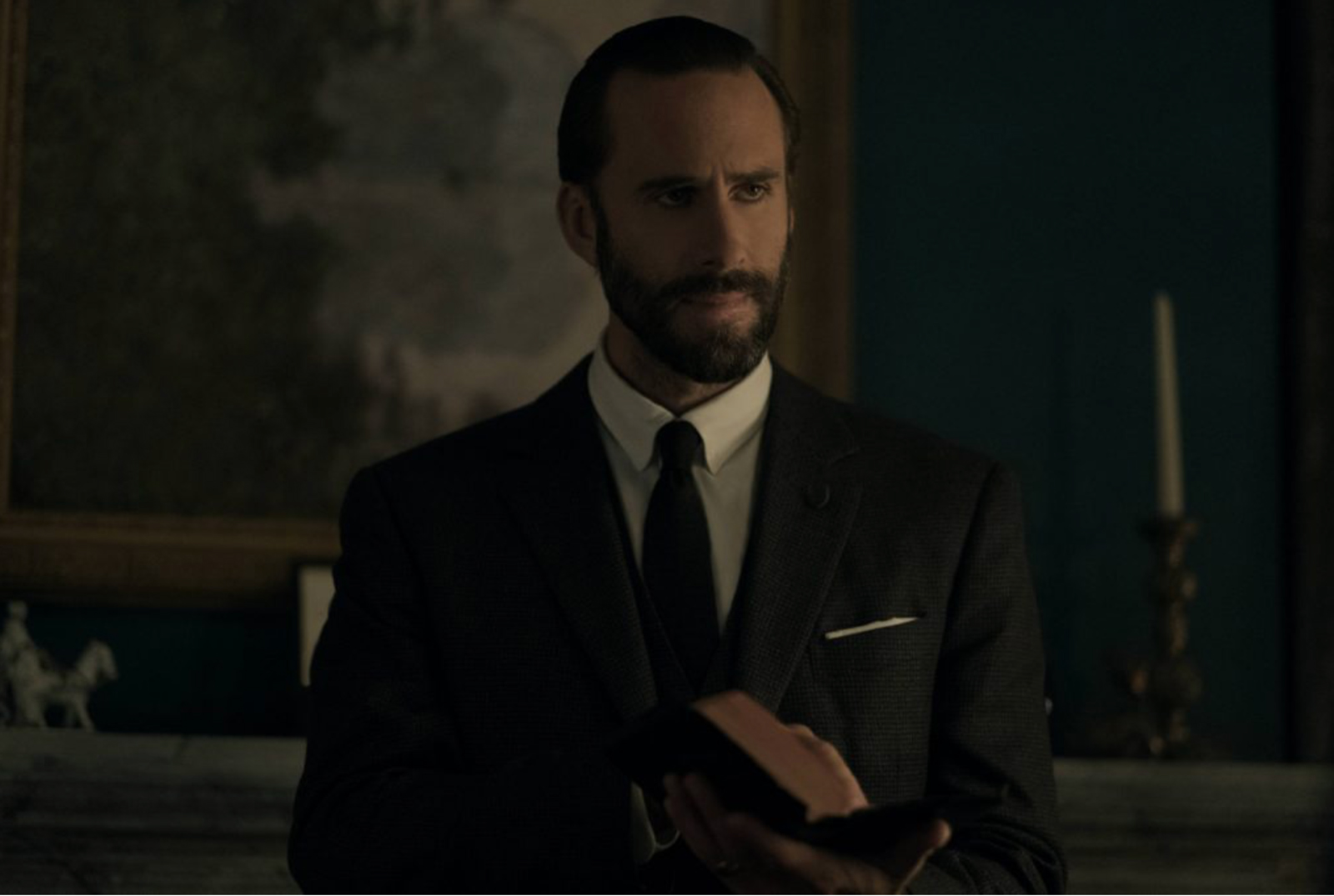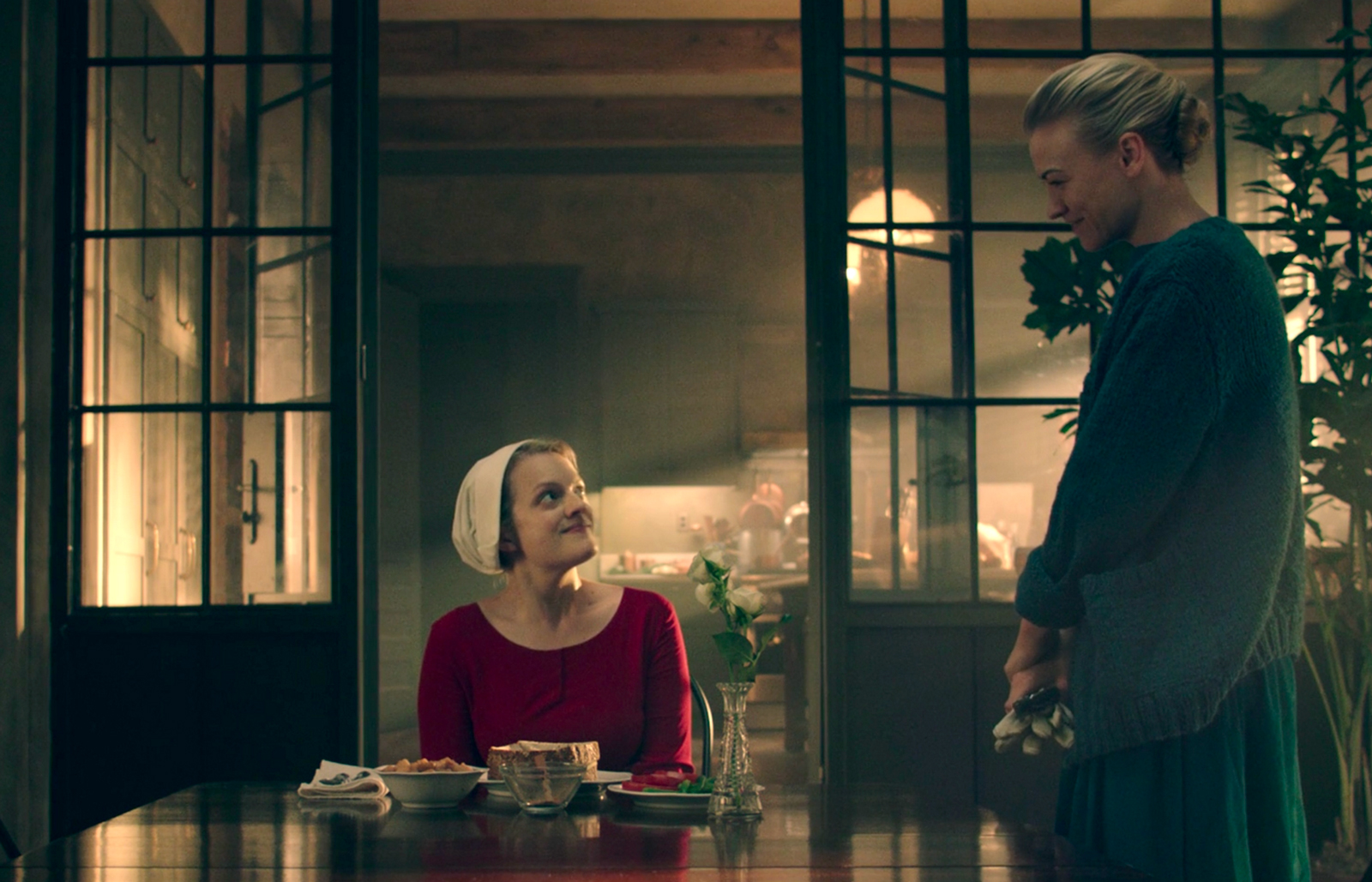Like the 1985 Margaret Atwood novel on which it is based, the new Hulu TV series The Handmaid’s Tale has been enthusiastically acclaimed as a feminist classic: a cautionary, necessary, and relevant depiction of misogyny at its most extreme. In Gilead, the tyrannical religious dystopia in which the novel and the series are set, women have been enslaved, and are either servants, known as Marthas, or Handmaids: involuntary surrogate mothers for the children of the leaders, the Commanders whose wives have been rendered infertile by environmental pollution.
Fortunately for the show’s producers, if not for the rest of us, this scenario seems uncannily timely, given how many recent events—the threatened defunding of Planned Parenthood, the silencing of Elizabeth Warren on the Senate floor, Donald Trump’s repeated expressions of contempt for women—suggest that, if men like Mike Pence and Mitch McConnell have their way, we might end up living in a Gilead of our own. The possibility that the progress that women have made could be reversed seems more likely than it did when Atwood’s novel was published. After all, it’s already happened to Iranian women after the Khomeini revolution, and to Afghan women living under the Taliban.
Writing in The Guardian, Jessica Valenti suggests that the handmaids’ plight is less like science fiction than reportage: “Much of the show feels familiar in today’s political climate…the show surfaces women’s fear of what everyday sexism really means.” Buzzfeed praised its “radical feminist aesthetic,” its “sprawling, nimble…female glance” and its rejection of the “male gaze” that has dominated art and cinema. Atwood has suggested in The New York Times, “If this future can be described in detail maybe it won’t happen.”
Watching the show, however, I began to think that it was neither a useful warning about the patriarchy’s hostile plan for women, nor a proactive attempt to thwart those dark intentions. Gradually, it occurred to me that I was instead watching a seven-hour-long orgy of violence against women—promoted and marketed as high-minded, politically astute popular entertainment. In what sense is it “feminist” to provide viewers with a glossy, sensationalized portrayal of women’s deepest anxieties and paranoias? What exactly is feminist about seeing women insulted, raped, humiliated, disfigured, beaten, tasered, tortured—and subjected to the sadistic whims of other women? If this is feminism, then so is girl-on-girl mud wrestling, or vintage prison films like Women Behind Bars.
Indeed The Handmaid’s Tale does resemble a serialized women’s prison drama, with Gilead as an enormous jail without walls. Aunt Lydia (Ann Dowd), the hyper-butch martinet who bullies the Handmaids into submission, recalls the cinematic corrections officers formerly known as “matrons.” When Gilead women are urged to unleash their pent-up frustration and fury on an accused rapist, we may feel that we are watching an open-air prison riot.
My objections have nothing to do with the quantity or the goriness of the carnage on display. I was a great fan of the immensely violent AMC series Breaking Bad—and not because it dramatized the problems of those who, like Walter White, lack adequate health insurance. What’s troubling about The Handmaid’s Tale is the prurient interest it seems to take in state-sanctioned torture and casual aggression against women: female suffering commodified and sold to us as political education. It trades on our terrors, torments its female characters, goes after a hefty profit, and at the same time tries to persuade us that it is not only doing women a favor but furthering their liberation.
One horror of Gilead is that women are valued only for their fertility. And yet the show appeals to our sentimental notions of maternity to generate sympathy for its heroine, Offred (Elisabeth Moss). We first see her protecting her child: a dystopian Mother Courage. And the hope of finding her daughter is what gives her the will to survive. Meanwhile the fertile Handmaids are brave, kindly, empathetic, and juicy, while the sterile Commanders’ Wives are frigid, desiccated, heartless bitches.
What makes it harder to distinguish what we are seeing (women being brutalized) from what we are meant to think we are seeing (the patriarchy revealing its secret evil heart) is the fact that the series is so engrossingly dramatic and visually beautiful. In their scarlet robes and white bonnets, mysterious and otherworldly as women in Bosch or Breughel, the docile Handmaids glide, heads lowered and hands clasped, through the bucolic landscape and past the stately homes of Ontario. The artfully designed upstairs-downstairs sets portray the Handmaids’ quarters as Shaker interiors, while the opulent salons of the blue-clad Commanders’ Wives evoke the lobbies of Morris Lapidus’s Miami hotels.
The acting is so skillful that we are seduced into overlooking the plot holes and lapses in logic. Has no one in Gilead heard of artificial insemination? Why is Mexico’s fertility rate even lower than that of the United States? Moss is marvelous as Offred, a woman who has been forcibly extracted from her former life (husband, daughter, job) and assigned to bear the child of her Commander (Joseph Fiennes), who, in a ritualized rape referred to as “the ceremony,” attempts to impregnate her as she lies in the lap of his infertile wife (Yvonne Strahovski).
Partly because of Moss’s skill, partly because it is more disturbing to witness violence than to read about it, and partly because of the script’s clever reordering of the events of the novel, we may feel more sympathy for this Offred than we did for her counterpart in the book. Like much dystopian fiction, The Handmaid’s Tale expends more energy establishing the new rules and new language of an oppressive world order than in creating complex characters, who often seem less interesting than the nightmare worlds they inhabit.
But the TV show compels us to care about—to root for—Offred. At the start of the novel, she is already in a detention center, guarded by armed men and Aunts with cattle prods. In the Hulu series, we meet the future Offred (still a normal person named June) in frantic flight, attempting—with her husband and daughter—to cross the Canadian border. Their car crashes, mother and child run into the woods. We hear shots; the husband, we presume, is dead. Thugs grab the child and beat our heroine unconscious. Our compassion for June/Offred grows after she is turned into a murmuring, zombified version of her former self. Though she rarely speaks except in the robotic Bible-ese of Gilead small talk (“Praise be…Blessed day”), we are privy to her thoughts in a voice-over narration that quotes directly from the novel or mimics its cadences.
It’s a challenge for the series (as it was for Volker Schlöndorff’s underrated 1990 film of the novel) to make it clear that the impregnation ceremony involving the Commander, the Handmaid, and the Commander’s Wife is a rape masquerading as a religious ritual and not soft-core group sex. As the camera focuses on Offred’s face, Moss registers alienation, horror, fear, grief—and resignation. Should it matter that the Commander is played by the handsome Joseph Fiennes? I’m not suggesting that it’s less odious to have nonconsensual sex with a man who looks like a movie star. But one can’t help thinking that we are watching something quite different, something more glamorized, than we would be were the Commander a troll.
Clearly, this represents a considered commercial decision. In an interview with Business Week, the showrunner, Bruce Miller, explained why the Commander and his wife have been made much younger and more attractive than their counterparts in Atwood’s novel and Schlöndorff’s film:
I felt that it was a more active dynamic if Serena Joy [the Commander’s Wife] felt like this person was usurping her role not only as the reproductive object of the house but gradually taking away the wifely duties, the intimate duties, the romantic, sexual duties… The two of them together, you feel like, “I’d love to see them go toe-to-toe in a cage match.”
Others may feel less eager to watch two women brawl in a cage, but it’s inarguably sexy: the face-off between the warm-hearted slave girl and the ice-cold-princess wife. The tensions between the lovely female rivals provide a frisson of soap-operatic melodrama, though their scenes together more frequently make one imagine a Mad Men episode in which Peggy (also Elisabeth Moss) battles Don Draper’s blond wife Betty, played by January Jones—whom Yvonne Strahovksi strongly resembles.
Perhaps I would have liked the series more if I’d sprung for the costlier Hulu subscription, the one without ads. As it was, the rebellious Handmaid getting her right eye gouged out and the lesbian Handmaid (in Gilead speak, a “gender traitor”) forced to watch her lover hanged were periodically interrupted by commercials for cars, Wells Fargo, whiskey, and, oddly, the Marines. I also wish I hadn’t seen, in late April, on the University of Southern California campus, two rows of women costumed in the Handmaids’ red robes and white bonnets, standing silently on the walkway—a spooky but effective promotional stunt for the series. Obviously, a great deal of money has been invested in producing and advertising the show, because someone hopes to make even more money from a stylish depiction of what women might be forced to endure if things get really bad.
Advertisement
Ultimately, Offred’s determination and grit make the series more heartening and inspiring: more feminist, one might say. But before Offred can demonstrate that grit, too many women’s fingers and hands have been lopped off as punishment for the crime of reading. To claim that Hulu’s The Handmaid’s Tale is feminist TV is like saying that bullfighting is an intentional defense of animal rights—because there is always a slim chance that, in the end, the bull may prevail.
The Handmaid’s Tale is now streaming on Hulu.





